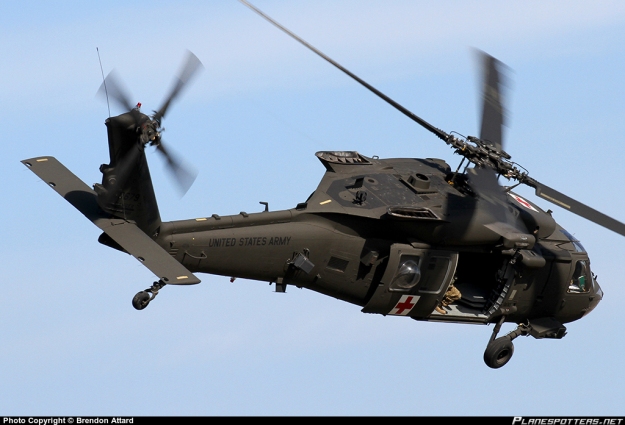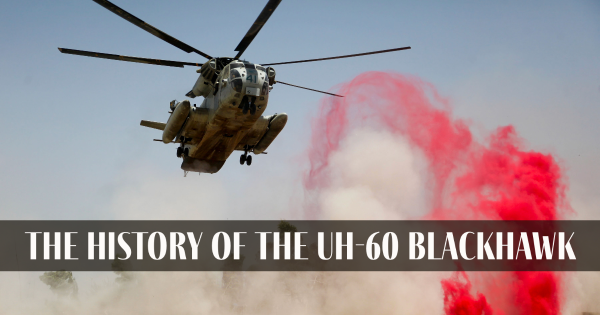Safety First: Essential Steps in UH 60 Helicopter Upkeep
Safety First: Essential Steps in UH 60 Helicopter Upkeep
Blog Article
Understanding the Mechanics and Design Behind Uh 60 Helicopters
The UH-60 helicopter, typically understood as the Black Hawk, stands as a peak of contemporary rotorcraft modern technology, personifying a mix of robust design and intricate mechanics. As we peel off back the layers of the UH-60's layout, a globe of intricate systems and careful engineering comes to light.
History of UH-60 Helicopters
The background of UH-60 helicopters traces back to the late 1970s when the United States Army sought a versatile and innovative utility helicopter to change its aging fleet. In feedback to this requirement, the Sikorsky Aircraft Corporation developed the UH-60 Black Hawk helicopter. Presented in 1979, the UH-60 swiftly ended up being a staple in armed forces operations due to its remarkable capacities.
The UH-60 was created to stand out in a range of objectives, including troop transport, medical emptying, digital war, and unique procedures. Its capacity to adjust to different duties made it an important possession to the united state Military and other military forces around the world
Over the years, the UH-60 platform has actually undertaken a number of upgrades and variations to boost its performance and keep pace with evolving objective needs. These helicopters have seen extensive solution in conflicts such as the Gulf War, Afghanistan, and Iraq, showcasing their reliability and adaptability in diverse operational settings. The UH-60's rich background is a testament to its enduring heritage as a premier utility helicopter.

Engine and Power Systems
Utilizing cutting-edge propulsion technology, UH-60 helicopters are outfitted with innovative engine and power systems to make certain optimum efficiency and dependability in a range of operational circumstances. The UH-60, generally understood as the Black Hawk, is powered by two General Electric T700-GE-701D engines, each with the ability of delivering up to 1,940 shaft horse power. These turboshaft engines give the essential drive for the helicopter to execute its missions effectively, consisting of army transport, clinical emptying, and combat assistance.

Blades System and The Rules Of Aerodynamics
Exactly how do the rotor system and aerodynamics of UH-60 helicopters add to their functional effectiveness and flight capacities? The blades system of the UH-60 helicopter plays a vital function in providing lift and propulsion.
The rules of aerodynamics likewise play an essential role in the efficiency of UH-60 helicopters. The streamlined body and blades blade design reduce drag, permitting the helicopter to accomplish higher rates and much better gas performance. The aerodynamic layout of the UH-60 additionally adds to its capacity to operate in varied ecological conditions, consisting of warm temperatures and high elevations.
Avionics and Flight Control Equipment

In its intricate coordination with the blades system and aerodynamics of UH-60 helicopters, the avionics and trip control systems form a vital network of innovations forming the aircraft's functional capabilities. Avionics include the digital systems utilized for interaction, navigation, and keeping an eye on various airplane features. In the UH-60, these systems include electronic displays, communication radios, general practitioner navigation, weather condition radar, and auto-pilot systems. These avionics systems provide critical information to the pilots, improving situational awareness and making sure safe and effective operation of the helicopter.
The flight control systems of the UH-60 are in charge of converting the pilot's inputs into the suitable modifications to the rotor system, making sure secure trip and ability to move. These systems include hydraulic actuators, servos, and computers that work together to control the tail and main rotors, in addition to other flight control surfaces. By precisely managing the helicopter's flight dynamics, these systems enable pilots to carry out a large range of objectives, from transport and search-and-rescue to fight operations, with precision and confidence.
Role and Applications in Aviation
Avionics systems in UH-60 helicopters encompass a range of electronic systems that aid in navigating, interaction, tracking, and managing various airplane features. These systems include electronic displays, autopilot systems, interaction radios, General practitioner navigation tools, and weather radar. Furthermore, these systems include security attributes such as auto-pilot modes, surface recognition click to find out more cautioning systems, and security enhancement systems to enhance the general safety and security and functional capabilities of the UH-60 helicopters in different goals, including troop transport, clinical discharge, search and rescue, and aerial firefighting.
Final Thought
Finally, the UH-60 helicopter is a functional aircraft with a rich history and progressed design. Its engine and power systems, blades system, aerodynamics, avionics, and flight control systems all work with each other to make it a reliable and trusted device. The UH-60's function and applications in aeronautics are substantial, varying from military operations to search and rescue missions. Its continued advancement and use demonstrate its value in the area of aeronautics (uh 60).
In its complex sychronisation with the blades system and the rules of aerodynamics of UH-60 helicopters, the avionics and trip control systems develop a crucial network of technologies shaping the airplane's functional abilities.The flight control systems of the UH-60 are responsible for translating the pilot's inputs right pop over to this site into the ideal changes to the blades system, making sure stable trip and maneuverability. Avionics systems in UH-60 helicopters encompass a variety of digital systems that aid in navigating, interaction, monitoring, and controlling numerous aircraft features. Additionally, these systems integrate safety features such as auto-pilot modes, surface recognition cautioning systems, and stability enhancement systems to improve the overall safety and security and operational capabilities of the UH-60 helicopters in numerous missions, consisting of troop transport, clinical evacuation, search and rescue, and airborne firefighting.
Its engine and power systems, rotor system, the rules this content of aerodynamics, avionics, and flight control systems all function together to make it a dependable and reliable equipment.
Report this page